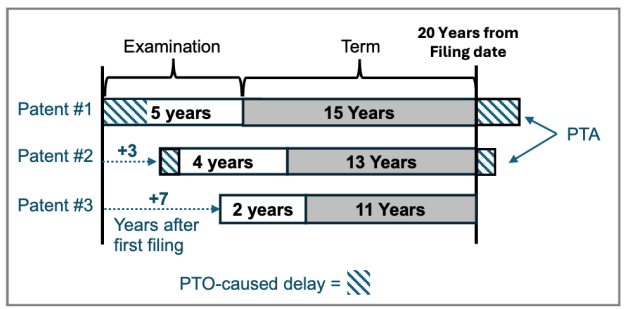by Dennis Crouch
Many have been thinking of the potentially large impact of Cellect v. Vidal, which is now pending before the Supreme Court. This week I uncovered striking data that a very large number of patents have been impacted.
Some background:
To continue reading, become a Patently-O member. Already a member? Simply log in to access the full post.
